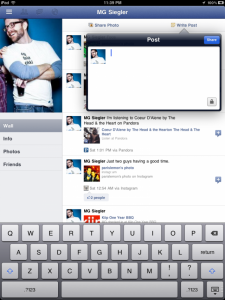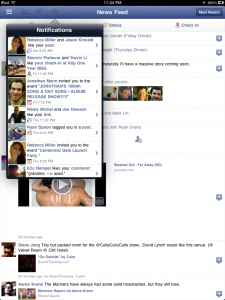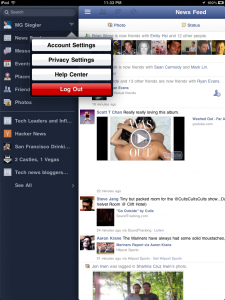Stiu ca multi dintre voi asteapta aplicatia Facebook pentru iPad de ceva vreme si din pacate va trebui sa mai asteptati insa cei de la TechCrunch au reusit sa obtina o copie a aplicatiei ce urmeaza sa fie lansata in curand. In imaginile din acest articol o aveti prezentata si cei de la TechCrunch sustin ca ea functioneaza cat se poate de bine si este in mare parte scrisa in HTML5. Informatii despre versiunea pentru iPad a aplicatiei au fost descoperite in codul aplicatiei pentru iPhone, mai exact in versiunea 3.4.4 lansata zilele acestea de catre Facebook deci este foarte posibil ca aplicatia Facebook sa devina universala.
All of this is possible apparently thanks to a seemingly tiny update Facebook pushed yesterday to their iPhone app. Version 3.4.4 seemed like a small version that restored the “Send” button for comments and chat among a few other little things. Facebook may have even pushed it out in response to some backlash they had been getting about the app, as Financial Times covered a few days ago. Perhaps it was the rush to fix some of those issues that caused Facebook to push this version – which will clearly eventually be Universal Binary (meaning it will house both the iPhone and iPad versions of the app) – with the iPad elements inside. Whatever the case, the app is carrying a payload of much greater importance than some bug fixes.
Nu se stie deocamdata cand anume va fi lansata aceasta noua versiune a aplicatiei iPad, ea ar fi trebuit sa apara deja in App Store dar se pare ca deocamdata inca se lucreaza la perfectionarea ei. Cei de la TechCrunch sustin ca aplicatia functioneaza foarte bine, are un UI modificat pentru a fi perfect pentru o tableta si probabil va aduce cateva optiuni noi. Mai multe imagini cu aplicatia Facebook pentru iPad gasiti aici iar cand aceasta va fi lansata in App Store va voi anunta.
Daca doriti sa testati versiunea pentru iPad pe tableta voastra trebuie doar sa modificati fisierul info.plist din aplicatie si in dreptul liniei <em>UIDeviceFamily</em> sa adaugati valoarea 2.

























